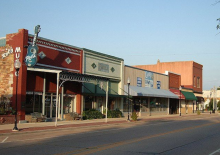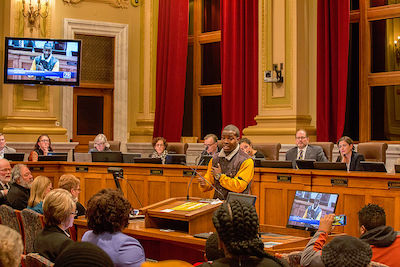How This Small Oklahoma Town Improves Rural Connectivity; Sallisaw Road Trip
In rural northeast Oklahoma, the city of Sallisaw, Oklahoma, built a high-speed fiber network to their residents and then expanded Internet access their rural neighbors with fixed wireless. Sallisaw’s Internet department, DiamondNet, now serves about 2,600 customers in northeastern Oklahoma.
To learn how the city does all of this, I sat down with Keith Skelton and Robin Haggard in the City Manager’s Office in the heart of the small town in late November 2017. Residents of the city have had high-speed Internet service over a Fiber-to-the-Home (FTTH) network for more than a decade, but city officials have not rested on their laurels. They jumped at the chance to bring connectivity to their rural neighbors.
We learned about the network’s history in 2014, when Christopher spoke with Skelton and Telecommunications Superintendent Danny Keith, for episode 114 of the Community Broadband Bits podcast. He described how much of the community relied on dial-up before Sallisaw invested in DiamondNet. The network began serving the community in the early 2000s. For more on the history of DiamondNet, including the challenges they overcame as a small community, check out the podcast.
Connecting Rural Neighbors
Across the country, many fixed wireless providers have attempted to bring high-speed Internet service to rural communities. Some have found success, while others have struggled. In 2015, a small fixed wireless provider decided to get out of the business in Oklahoma. The company donated the tower to Sallisaw, which took on the challenge of providing rural connectivity.




